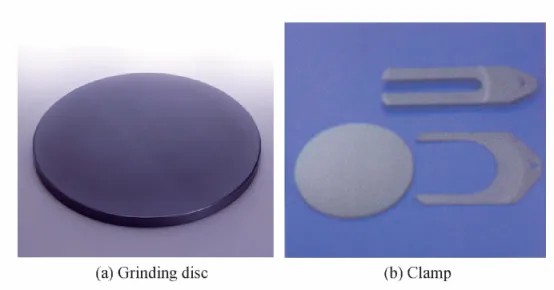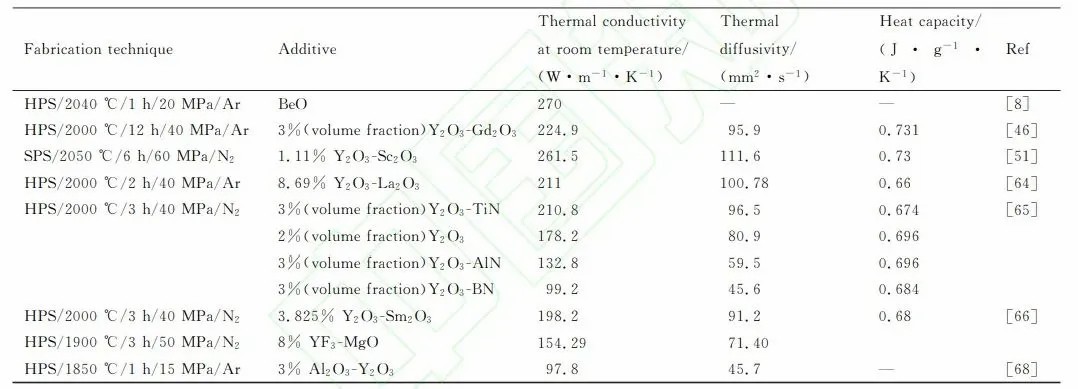
- English
- Español
- Português
- русский
- Français
- 日本語
- Deutsch
- tiếng Việt
- Italiano
- Nederlands
- ภาษาไทย
- Polski
- 한국어
- Svenska
- magyar
- Malay
- বাংলা ভাষার
- Dansk
- Suomi
- हिन्दी
- Pilipino
- Türkçe
- Gaeilge
- العربية
- Indonesia
- Norsk
- تمل
- český
- ελληνικά
- український
- Javanese
- فارسی
- தமிழ்
- తెలుగు
- नेपाली
- Burmese
- български
- ລາວ
- Latine
- Қазақша
- Euskal
- Azərbaycan
- Slovenský jazyk
- Македонски
- Lietuvos
- Eesti Keel
- Română
- Slovenski
- मराठी
- Srpski језик
Why Is There Increasing Demand for High-Thermal Conductivity SiC Ceramics in the Semiconductor Industry?
2024-10-14
Currently, silicon carbide (SiC) is a highly active area of research in thermal conductive ceramic materials both domestically and internationally. With a theoretical thermal conductivity that can reach up to 270 W/mK for certain crystal types, SiC is among the top performers in non-conductive materials. Its applications span across semiconductor device substrates, high-thermal-conductivity ceramic materials, heaters and hot plates in semiconductor processing, capsule materials for nuclear fuel, and airtight seals in compressor pumps.
How Is Silicon Carbide Applied in the Semiconductor Industry?
Grinding plates and fixtures are essential process equipment in the production of silicon wafers within the semiconductor industry. If grinding plates are made from cast iron or carbon steel, they tend to have a short lifespan and a high coefficient of thermal expansion. During the silicon wafer processing, especially during high-speed grinding or polishing, the wear and thermal deformation of these grinding plates make it challenging to maintain the flatness and parallelism of the silicon wafers. However, grinding plates made from silicon carbide ceramic exhibit high hardness and low wear, with a coefficient of thermal expansion that closely matches that of silicon wafers, enabling high-speed grinding and polishing.

Moreover, during the production of silicon wafers, high-temperature heat treatment is required, often using silicon carbide fixtures for transport. These fixtures are resistant to heat and damage and can be coated with diamond-like carbon (DLC) to enhance performance, mitigate wafer damage, and prevent contamination diffusion. Additionally, as a representative of the third-generation wide-bandgap semiconductor materials, silicon carbide single crystals possess properties such as a wide bandgap (approximately three times that of silicon), high thermal conductivity (about 3.3 times that of silicon or 10 times that of GaAs), high electron saturation velocity (around 2.5 times that of silicon), and a high breakdown electric field (approximately 10 times that of silicon or five times that of GaAs). Silicon carbide devices compensate for the shortcomings of traditional semiconductor material devices in practical applications and are gradually becoming mainstream in power semiconductors.
Why Is the Demand for High-Thermal Conductivity SiC Ceramics Surging?
With continuous technological advancements, the demand for silicon carbide ceramics in the semiconductor industry is rapidly increasing. High thermal conductivity is a critical indicator for their application in semiconductor manufacturing equipment components, making the research into high-thermal-conductivity SiC ceramics crucial. Reducing lattice oxygen content, increasing density, and rationally controlling the distribution of the second phase in the lattice are primary methods to enhance the thermal conductivity of silicon carbide ceramics.
Currently, research on high-thermal-conductivity SiC ceramics in China is limited and lags significantly behind global standards. Future research directions include:
Strengthening the preparation process research of SiC ceramic powders, as the preparation of high-purity, low-oxygen SiC powder is fundamental to achieving high-thermal-conductivity SiC ceramics.
Enhancing the selection and theoretical research of sintering aids.
Developing high-end sintering equipment, as regulating the sintering process to obtain a reasonable microstructure is essential for acquiring high-thermal-conductivity SiC ceramics.
What Measures Can Improve the Thermal Conductivity of SiC Ceramics?
The key to improving the thermal conductivity of SiC ceramics is to reduce phonon scattering frequency and increase the mean free path of phonons. This can be effectively achieved by reducing the porosity and grain boundary density of SiC ceramics, enhancing the purity of SiC grain boundaries, minimizing impurities or defects in the SiC lattice, and increasing the thermal transport carriers in SiC. Currently, optimizing the type and content of sintering aids and high-temperature heat treatment are primary measures to enhance the thermal conductivity of SiC ceramics.
Optimizing the Type and Content of Sintering Aids
Various sintering aids are often added during the preparation of high-thermal-conductivity SiC ceramics. The type and content of these sintering aids significantly affect the thermal conductivity of SiC ceramics. For example, elements like Al or O in the Al2O3 system sintering aids can easily dissolve into the SiC lattice, creating vacancies and defects, thus increasing phonon scattering frequency. Furthermore, if the sintering aid content is too low, the material may not densify during sintering, whereas high sintering aid content can lead to increased impurities and defects. Excessive liquid-phase sintering aids might also inhibit SiC grain growth, reducing the phonon mean free path. Therefore, to achieve high-thermal-conductivity SiC ceramics, it is necessary to minimize the sintering aid content while ensuring densification, and select sintering aids that are not easily soluble in the SiC lattice.
Currently, hot-pressed SiC ceramics using BeO as a sintering aid exhibit the highest room-temperature thermal conductivity (270 W·m-1·K-1). However, BeO is highly toxic and carcinogenic, making it unsuitable for widespread use in laboratories or the industry. The Y2O3-Al2O3 system has a eutectic point at 1760°C and is a common liquid-phase sintering aid for SiC ceramics, but since Al3+ easily dissolves into the SiC lattice, SiC ceramics with this system as a sintering aid have room-temperature thermal conductivities below 200 W·m-1·K-1.
Rare earth elements such as Y, Sm, Sc, Gd, and La are not easily soluble in the SiC lattice and have high oxygen affinity, effectively reducing the oxygen content in the SiC lattice. Therefore, the Y2O3-RE2O3 (RE=Sm, Sc, Gd, La) system is commonly used as a sintering aid for preparing high-thermal-conductivity (>200 W·m-1·K-1) SiC ceramics. For example, in the Y2O3-Sc2O3 system, the ionic deviation between Y3+ and Si4+ is significant, preventing the formation of solid solutions. Sc’s solubility in pure SiC is relatively low at temperatures of 1800~2600°C, approximately (2~3)×10^17 atoms·cm^-3.

The Thermal Properties of SiC Ceramics with Different Sintering Aids
High-Temperature Heat Treatment
High-temperature heat treatment of SiC ceramics helps eliminate lattice defects, dislocations, and residual stress, promoting the transformation of some amorphous structures into crystalline structures and reducing phonon scattering. Additionally, high-temperature heat treatment effectively promotes SiC grain growth, ultimately enhancing the material’s thermal properties. For example, after high-temperature heat treatment at 1950°C, the thermal diffusivity of SiC ceramics increased from 83.03 mm2·s-1 to 89.50 mm2·s-1, and the room-temperature thermal conductivity increased from 180.94 W·m-1·K-1 to 192.17 W·m-1·K-1. High-temperature heat treatment significantly improves the deoxidation capability of sintering aids on the SiC surface and lattice and tightens the SiC grain connections. Consequently, the room-temperature thermal conductivity of SiC ceramics is notably enhanced after high-temperature heat treatment.**
We at Semicorex specialize in SiC Ceramics and other Ceramic Materials applied in semiconductor manufacturing, if you have any inquiries or need additional details, please don't hesitate to get in touch with us.
Contact phone: +86-13567891907
Email: sales@semicorex.com




